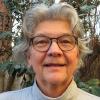Disability Studies and Mad Studies
Please set your timezone at https://www.chstm.org/user
Consortium Respectful Behavior Policy
Participants at Consortium activities will treat each other with respect and consideration to create a collegial, inclusive, and professional environment that is free from any form of discrimination, harassment, or retaliation.
Participants will avoid any inappropriate actions or statements based on individual characteristics such as age, race, religion, ethnicity, sexual orientation, gender identity, gender expression, marital status, nationality, political affiliation, ability status, educational background, or any other characteristic protected by law. Disruptive or harassing behavior of any kind will not be tolerated. Harassment includes but is not limited to inappropriate or intimidating behavior and language, unwelcome jokes or comments, unwanted touching or attention, offensive images, photography without permission, and stalking.
Participants may send reports or concerns about violations of this policy to conduct@chstm.org.
Upcoming Meetings
There are no currently scheduled upcoming events.
Past Meetings
-
January 10, 2023
Beth Linker, University of Pennsylvania
Title: Disability and the Making of the Posture Sciences
Abstract: On the eve of World War I, a new health threat gripped the United States. The first report of it ran in the New York Times, just weeks before the U.S. officially declared war on Germany in the spring of 1917. A Boston physician conducting physical exams on freshman entering Harvard University found a distressing number of students with poor body alignment. The study, known as the “Harvard Slouch” report, would become the baseline for subsequent population studies on posture health for much of the century to come. In those years, Americans from all walks of life—immigrants, military draftees, school children, educators, and industrial workers—would undergo posture examinations, with public health officials reporting that approximately 80 percent of U.S. citizens suffered from postural defects. These studies would continue for nearly the entire twentieth century, forming the basis for a national health epidemic geared toward bodily surveillance and disability prevention.
My forthcoming book Slouch focuses on this consequential but often overlooked episode in U.S. history with an eye toward revealing how notions of ableness along with a pervasive fear of disability fueled the creation of and preoccupation with the poor posture epidemic. The first chapter of the book “Disability and the Making of the Posture Sciences” explores how poor posture came to be construed as a disability in the first place, largely through the work of paleoanthropolgists and physicians.
Bio: Beth Linker is the Samuel H. Preston Endowed Term Associate Professor at the University of Pennsylvania in the Department of the History and Sociology of Science. She is the author of War’s Waste: Rehabilitation in World War I America (Chicago, 2011) and co-editor of Civil Disabilities: Citizenship, Membership, and Belonging (Penn Press, 2014). Her book, Slouch: Posture Panic and the Making of an Epidemic is forthcoming from Princeton University Press.
-
December 13, 2022
“Ronald Reagan, Frank Lanterman, and the Shape(ing) of Deinstitutionalization in California”
This presentation is based on the last chapter of my book manuscript, California and the Politics of Disability, 1870-1970. In it I look at how the election of Ronald Reagan as governor in 1966 threw a curve ball into California’s plans for deinstitutionalizing the population of state hospitals in the 1960s. I focus on the political wrangling that took place at every level of government (local, county, and state) involved in the decision-making process in California about when, how, and why to close the majority of state institutions for the disabled and yet still provide at least some level of care. I also examine how the state’s original plans (embodied in State Assemblyman Frank Lanterman, who had led the charge in state government for a shift towards community care since the 1950s) were quickly subverted and altered by the arrival of a new conservative ethos in the form of Reagan’s gubernatorial administration, with lasting consequences for Californians with disabilities.
Eileen V. Wallis is a Professor of History at California State Polytechnic, Pomona. She specializes in gender history, the American West and California, public history, and disability history. She is the author of Earning Power: Women and Work in Los Angeles, 1880-1930 and of numerous scholarly articles on the history of California and the American West. Her current book project, “California and the Politics of Disability, 1850-1970,” uses Los Angeles County as a case study to understand how the interplay between state and county governments shaped the lived experiences of Californians deemed “mentally disordered” from the mid-nineteenth to the mid-twentieth century.
-
November 8, 2022
*Meeting Canceled*
"Early Hollywood’s Mad Girls: Disability, Difference & Self-Destruction"
In 1918, Motion Picture Magazine reported that Fannie, “a country girl who was never taught anything,” wrote to Vitagraph studios vowing that, “To become a movie actress I could undergo all the tortures of the Inquisition of Spain.”
Availing herself of the new embellished language of media celebrity, the self-described “poor and melancholic dreamer” hints at an often-disregarded violence shadowing the auspicious rise of the US star system: her eager self-endangerment reveals that the economy of sacrifice and reward the early film industry affixed to Hollywood success particularly spoke to struggling moviegoers. The country girl’s readiness to endure unwarranted “tortures” in order to make it in Hollywood also exposes an intuitive awareness of the skewed power-dynamics and ruthless patriarchal elitism subtending the US film industry in the 1910s. Tellingly, the process Fannie offers to undergo is compared to a brutal moment of misogyny in Western history, where clergymen prosecuted women—many adolescent girls—for the crimes of heretic defiance. Such accusations, feminist scholars have shown, worked to justify a concerted institutional attack on women’s sororal communities and matrilineal knowledge. Published as an example of “movie-mad” girlhood, Fannie’s letter thus captures how a male-presided film industry responded to the advancement of a woman-centered film culture: by advertising the ambitions of young female fans as symptoms of broader pathologies.
This paper addresses the roles female fan suffering—from social alienation to disordered moods and generational strife—played in the reception and promotion of US cinema during World War I. I argue that by exploring first-person narratives found in private papers and the press, we gain insight into the yearning, grit, injury, and despair experienced by working, immigrant, and middle-class girls who hoped a star-driven industry would help them transcend the heterosexist strictures of white propriety, the grind of menial employment, the scarcity of rurality, and the segregation of urban life. Though easily read as artifacts of female failure, the suicide notes and criminal statements examined here emerge as testaments of queer film reception: a powerful nonnormative attachment to the pictures that willfully went against the grain of convention by instead embracing moral, social, and legal disobedience.
Bio: Diana W. Anselmo is a feminist film historian and a queer immigrant. Her work on female audiences has appeared in Screen, Camera Obscura, Film History, Feminist Media History, JCMS: Journal of Cinema and Media Studies, and Journal of Women’s History, among others. Her first book, A Queer Way of Feeling: Girl Fans and Personal Archives of Early Hollywood, is forthcoming with the University of California Press. She is currently an Assistant Professor of Film at California State University, Long Beach.
-
October 11, 2022
Dissertation Chapter: State-Level and Local Associations Led by Blind People in the Late-Nineteenth- and Early-Twentieth-Century United States
Abstract: This dissertation chapter draft explores the formation, activities, and legacies of state-level and local associations led by blind people in the late-nineteenth- and early-twentieth-century United States. These blind-led associations sought to challenge some of the ways in which the specific forms of ableism of their period marginalized many blind adults from full economic and social citizenship. The associations were founded and operated across the United States, though, in step with wider reform trends, they were most represented in the midwestern, northern, and western states. Leaders in the organizations tended to be (though were not always) blind women and men who were also middle-class and white. These American blind-led associations emerged from network connections related to the state residential schools for blind children which had been operating in the United States since the 1830s. The schools had channeled many of the social hierarchies of their regional and national contexts, which manifested in the exclusion or relegation within internal school hierarchies of Indigenous, Black, non-white immigrant, and poor blind people. These power dynamics in the schools were in turn reproduced when they and their alumni organizations became incubators of blind-led association-building after the American Civil War. While the blind-led associations emerged from the schools, they simultaneously represented a departure from and a challenge to the priorities of the schools and the superintendents who managed them. Unlike the schools, the associations explicitly valued blindness as a form of expertise in leadership. Furthermore, the associations primarily sought to serve blind adults rather than children. The chapter reconstructs the activities of these associations through archival research in collections related to blindness history, as well as through analysis of sources identified through keyword searches in digitized newspaper databases and other online corpora. It argues that the wider reform landscape of American “Progressive Era” organizing shaped the composition and trajectories of the blind-led associations. This context furthermore conditioned the associations’ achievements and their legacies, including the limitations of those achievements and legacies.
Madeline (Maddie) Williams is a PhD candidate in the History Department at Harvard University. She is working on her dissertation on the history of organizing led by blind people in the nineteenth- and twentieth-century United States. During the 2021-2022 academic year, she was a Dissertation Fellow at the CHSTM. For the Fall 2022 semester, she is teaching an undergraduate seminar on “Disability in American History” as a Stephen A. Walsh History Prize Instructor at Harvard.
-
May 10, 2022
Natalia Pamula, Work-in-progress (a book chapter draft)
This chapter analyzes a range of literary texts (non-fiction, young adult literature, disability memoirs) to examine representations of disability futures in post-socialist Poland. Although produced over the span of twenty-six years (1995–2021), these futures are quite uniform in that they are privatized and, more specifically, familialized. A disabled future is secured only by a family and only within a family. Polish post-1989 literary texts show that the family is the only place that can guarantee a future for a disabled subject. Without a family or a mother, a disabled subject is utterly alone, whereas to live as the mother of a child with disability is to never be alone. As a result, these texts testify to the binding of the bodies and futures of a mother and her disabled child. In other words, in post-1989 Polish literature, a disabled child is imagined as a mother’s child. The birth of a disabled child oftentimes signals the end of a mother’s normatively understood future. Or, to put it differently, a mother’s future becomes intimately interwoven and attached to her disabled child’s future. These bindings of bodies and futures generate what I call a “violent intimacy” between a mother and her disabled child.
BIO: Natalia Pamula is an assistant professor at the American Studies Center at the U of Warsaw. She works on disability discourses and representations in Polish socialist and post-socialist culture. Her work has appeared in Aspasia, East European Politics and Societies and Cultures, and Canadian Slavonic Papers.
-
April 12, 2022
Cassandra Evans, Ph.D., Assistant Professor of Disability Studies at the City Univesity of New York's School of Professional Studies, will discuss excerpts from dissertation research, specifically the chapter"Occupying Time, Places and Spaces, Peer Work" from Asylum to Community and In Between: Examining the post-Deinstitutionalization Experiences of Individuals with Mental Disabilities in Suffolk County, New York and discuss how this is shaping a new work in progress: Five wives (a novel regarding disability justice and intersectionality).
My current work of fiction (Five wives) is in nascent stages and is being shaped by themes emergent from fieldwork I did for my dissertation. This work is also supported by the CUNY Faculty Fellowship Publication Program under mentor and author Bridgett M. Davis at Baruch College. Years after enthnographic studies I conducted with people on Long Island, New York, most of whom transitioned out of one of four New York State psychiatric asylums in the 70s, 80s and 90s, I am thinking about the lands those spaces inhabited along with lived experiences of indigenous people of the northern California region. I continued to find similar narratives in these two spaces--East and West--as well as shared experiences of settler colonialism, environmental racism, ableism and sanism. Simultaneously, discussions and submissions graduate students in my "Disability and Narratives" class continue to share with me, led me, or more so repositioned me to this project.
Set near Maidu First Nation lands of Northern California and Shinnecock of New York, Five wives is a historical novel illustrating rejection of people with disabilities from the ‘60s through 2000s. Characters’ experience marginalization toward children, indigenous people, and immigrants whose disability, gender, or non-citizenship deem them as “cause for exclusion.” Embodied intersectional biases toward sexual nonconformity, neurodivergence, and disability uncover how justice is skewed by various power systems aimed at silencing or erasing variance (Crenshaw 2016). Brother and sister main characters endure abuse, defective labels, gaslighting, and forced rehabilitation as they reveal universal truths about ableism, institutionalization, and trauma.
-
March 8, 2022
Conor Moynihan, PhD candidate, University at Buffalo (SUNY)
Curatorial Reflections on Variance: Making, Unmaking, and Remaking Disability
In this presentation, I discuss my exhibition Variance: Making, Unmaking, and Remaking Disability, which will be on view at the Rhode Island School of Design Museum of Art from January 29 through July 3, 2022. In forty works dating from the mid-1700s through today, these works ask us to consider how disability and illness are embodied and experienced, and how they have been represented by artists and deployed as visual tropes. These works foreground the ways that culture and art are shaped by physical, mental, and sensory differences that exist on the continuum of human variation. From moralizing, stereotypical historical representations of disability to more prideful modern and contemporary works, this exhibition highlights how disability is made, unmade, and remade towards new ends. Variance is primarily a permanent collection exhibition, and the process of developing this project involved exploring what in the existing collection speaks to disability culture and history but also strategic purchases to expand disability representation within the collection. For this paper, I will discuss the stakes behind this project, considering why it is important to discuss art through the lens of critical disability studies, and also the ways we have been working to make the exhibition and also the museum more accessible going forward. Ranging from artists like William Hogarth to Riva Lehrer, this exhibition aligns with the social model of disability and recognizes the value and history of disability culture while also digging in to the sedimentation of negative representations of disability that perpetuates stigma today. As a case study, I will discuss what I learned in the process of developing this project and how I hope to continue afterwards with more work on accessibility and diversity within disability arts and culture going forward.
Conor Moynihan is the Assistant Curator of Prints, Drawings, and Photographs at the RISD Museum and a Visual Studies PhD Candidate at the University at Buffalo (SUNY). His dissertation explores how contemporary artists engage with and critic the aesthetics of orientalism, primitivism, and exoticism, with a focus on queer, transnational performance- and lens-based artists. More broadly, his research interests include queer theory, disability studies, performance, and identity politics. His curatorial work includes exhibitions such as Drama Queer (2016; Vancouver, BC), Ill at Ease: Dis-ease in Art (2017; Buffalo, NY), and Three Acts, Three Scenes: Your Care, My Care, Careful Care (2018; Brooklyn, NY). He is working on two exhibitions to open at the RISD Museum in spring 2022: Variance: Making, Unmaking, and Remaking Disability and Presence and Perception in Contemporary Drawing.
-
February 8, 2022
Title: QueerCrip History and the 1960s Spectacle of White Appalachian Poverty Tours, Ryan Lee Cartwright
Abstract: This chapter from Peculiar Places: A QueerCrip History of White Rural Nonconformity (Chicago, 2021) examines how disability, sexuality, and gender intertwined in concerns about white Appalachian poverty in the 1960s. When poverty was “rediscovered” in the 1960s, racialized political concerns sent “poverty tourists”—politicians, journalists, social workers, volunteers, and college students—flocking to predominately white communities in West Virginia, eastern Kentucky, and other parts of the central and southern Appalachian Mountains. Michael Harrington and other 1960s poverty warriors attributed the social problems of white rural America to a muted form of mental and economic depression, saying that poor people were “maimed in body and spirit.” Even so, white men with temporary physical disabilities were the poster child for War on Poverty publicity, despite the fact that disability rarely healed according to curative time and most War on Poverty program specifically excluded people with disabilities. After offering a queercrip analysis of white Appalachian culture-of-poverty theory, I turn my focus to the mundane, material conditions of two specific poverty tours. In the first, I examine a controversial presidential visit to a poor white family who became fodder for gossip when the expected rehabilitation narrative was disrupted by the complexities of being poor and disabled. In the second, through a social worker’s account of the anxiety that poor white West Virginia men faced in navigating poverty bureaucracy, I consider how mental disabilities such as depression combined with labyrinthine bureaucracies to make poor people feel estranged. (Content note: discussion of familial CSA on p. 120)
BIO: Ryan Lee Cartwright is an assistant professor of American Studies at the University of California, Davis. Dr. Cartwright’s research focuses on disability, gender, and sexuality on the social and spatial margins. His first book, Peculiar Places: A Queer Crip History of White Rural Nonconformity (University of Chicago Press, 2021), maps racialized queer and disability histories of white social nonconformity across the rural US, from the 1910s to the 1990s. Cartwright’s second book examines how chronic illness came to be understood as a gendered, racialized “social burden” in the early-to-mid twentieth century US. His work has been funded by the ACLS, NEH, Smithsonian Institution, American Philosophical Society, and Hellman Family Foundation, among others. Prior to his appointment at the University of California, Davis, Cartwright was associate editor of MNopedia, a digital encyclopedia of Minnesota created by the Minnesota Historical Society.
-
January 11, 2022
Title: Picturing the Institution of Social Death: Visual Rhetorics of Postwar Asylum Exposé Photography
Abstract: This paper examines how photography shaped the American public’s perception of psychiatric hospitals during the immediate post-WWII period. I will analyze photographs that appeared in popular exposé articles of that period and that used photography as a visual aid for disclosing the poor conditions of state hospitals, intending to promote reform efforts focused on turning antiquated asylums into modern hospitals. Existing scholarship has mentioned how these photographs had a significant influence on shaping the public’s view of asylum conditions. Through a close examination of these photographs, I will argue that they often contained unintentional messages which stigmatized disabled people.
Bio: Shuko Tamao is currently a postdoctoral fellow at the National Museum of American History. She was also a postdoctoral research fellow during the 2020-2021 year at the University at Buffalo Center for Disability Studies. Her research areas are in 20th century American history and disability, with a focus on first-person experiences of institutionalization and memories associated with them. She is currently working on a manuscript project titled “Resisting Anonymity through Remembrance: A Narrative Examination of Postwar State Hospital Experiences” which uses material objects, oral testimony, visual culture, and other non-textual sources to recreate first-person narratives. With a background in public history, she is also co-writing an essay with Aaron Rubinstein about a range of issues specific to disability-related archival collections that prevent the voices of disabled people from being truly accessible to the public. This essay will be published in the collection “Cripping the Archive: Disability, History, and Power,” edited by Jenifer Barclay and Stefanie Hunt-Kennedy.
-
December 14, 2021
Chapter Title: Developmental Disorder, Racial Dissolution: Racial Typologies of Developmental Normalcy in Early Child Medicine, 1830 - 1870.
Chapter Description: This chapter argues that early texts on the physiology and pathologies of infancy and childhood reflected anatomical, physiological, and medical preoccupations with child disease and development as typological phenomena that were not generalizable across races. Instead, child development referred to a non-statistical “normal” that did not claim universality, but one that cohered within species or races. The first section analyzes medical treatises, with an emphasis on the developmental events most frequently associated with racial differentiation: cranial suture closure and puberty. The second section examines a wider range of medical, physiological, and ethnological texts to delineate how variable rates of development and the degree of synchronicity between competing developmental drives (i.e. physical and intellectual) generated racial hierarchies and threatened racial degeneration. More specifically, this section interrogates how “ethnic” classifications of idiocy and medical alarmism about precocious puberty and “puberty-as-crisis,” pathologized developmental timing and patterns in white children that were commonly accepted as typical in Black children. I argue that developmental norms actually constituted racial types, thus reframing developmental disorder as a threat to racial order. Finally, the concluding section contemplates how ecologies and epistemologies of anti/Blackness mutually reinforced one another in the antebellum U.S.
Kelsey Henry is a PhD Candidate in American Studies at Yale University, where she also received an MA in the History of Science and Medicine. Her work follows the legacies of nineteenth-century scientific metrics of human development and racial difference, metrics forged in the crucible of racial slavery, in histories of twentieth-century developmental science and biomedicine. She historicizes the production of developmental technologies and norms that are often perceived as race-neutral, like pediatric growth charts and developmental screening tests, interrogating the racial premises and parameters of developmental knowledge production and its material effects on Black life. Kelsey is a CHSTM Research Fellow for 2021-2022. Her work is supported by the Andrew W. Mellon Foundation and Yale’s Intersectional, Queer, and Trans Materialisms Initiative, and she has previously received support from the Dean’s Emerging Scholars Fellowship and the Ford Foundation Predoctoral Fellowship. She is involved in disability studies programming and disability justice initiatives at Yale and beyond, as a co-organizer of Yale’s Disability Studies Working Group, the Assistant Editor of Disability Studies Quarterly, and a co-host of the Disability History Association Podcast.
Group Conveners
-

Jenifer Barclay
Jenifer Barclay is an Associate Professor in the Department of History at the University at Buffalo, Associate Director of the university’s Center for Disability Studies, and Associate Editor for the Review of Disability Studies: An International Journal. She specializes in 19th century U.S. history, the history of slavery, the history of disability, race and global health.
-

Katherine Ott
Katherine Ott, Ph.D., is a curator in the Division of Medicine and Science at the Smithsonian's National Museum of American History. She is the author or co-editor of three books and has curated exhibitions and published on such topics as the history of disability, medicine, polio, HIV and AIDS, skin, LGBTQ+, and scrapbooks. She received the 2016 Society for Disability Studies Senior Scholar Award, is an OAH Distinguished Lecturer and teaches a graduate course in American Studies at the George Washington University. Ott tweets @amhistcurator about her work.
-

Natalia Pamula
Pamula is Assistant Professor of Cultural Studies and Disability Studies at the University of Warsaw, Poland. She specializes in Polish literature, American literature, and gender.
-

Mike Rembis
Mike Rembis is an Associate Professor in the Department of History at the University at Buffalo and the Director of the university’s Center for Disability Studies. He specializes in 19th and 20th century U.S. history, the history of psychiatry, the history of institutions, the history of eugenics, the history of disability, and mad people's history.